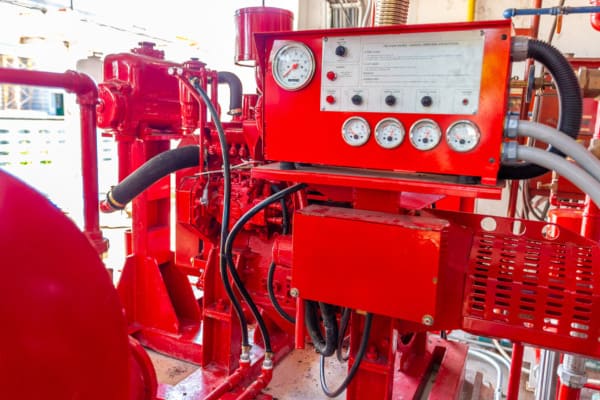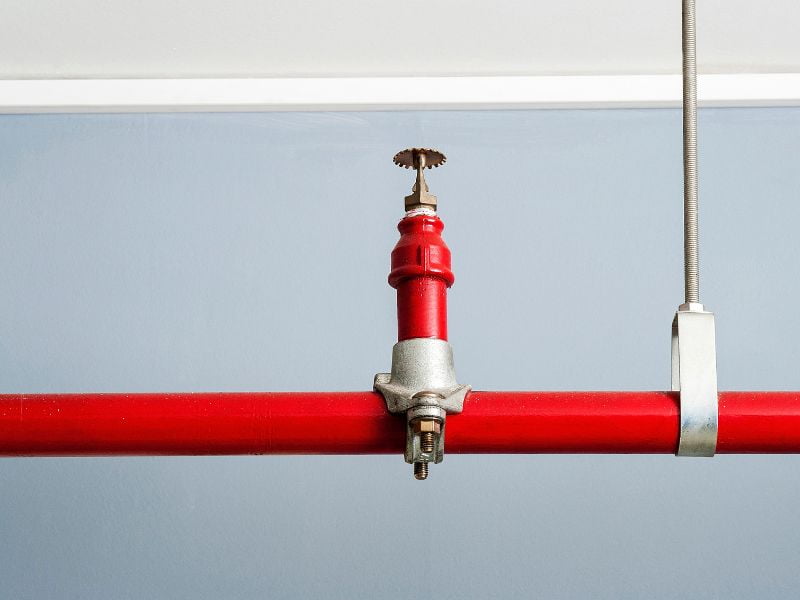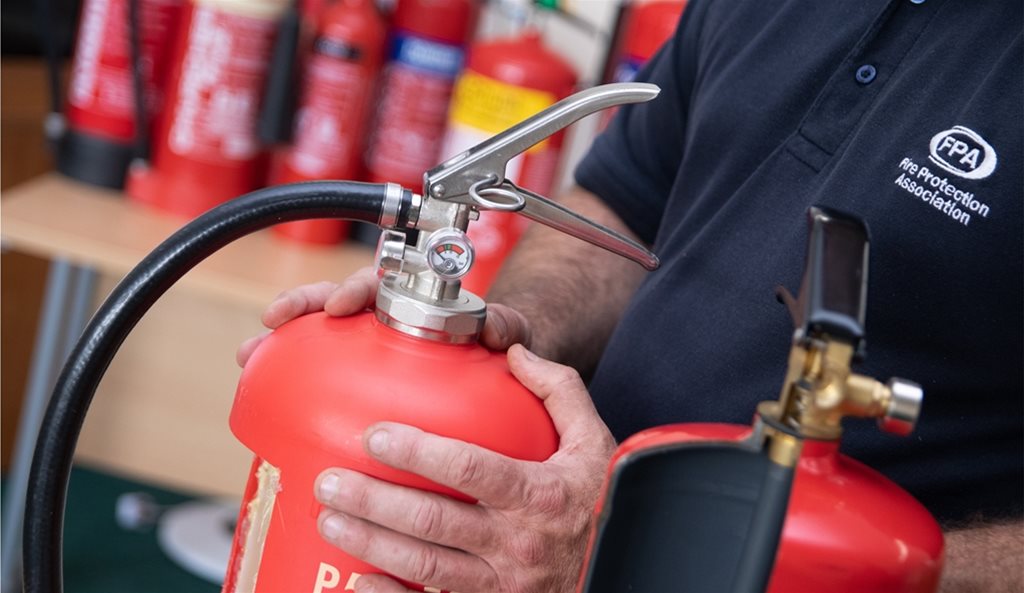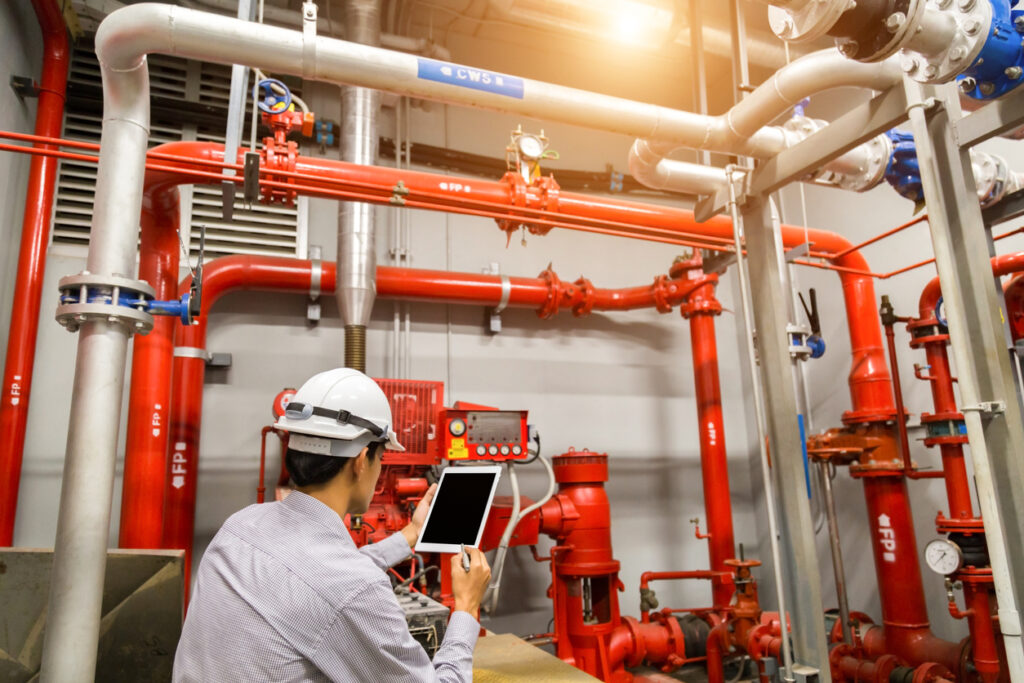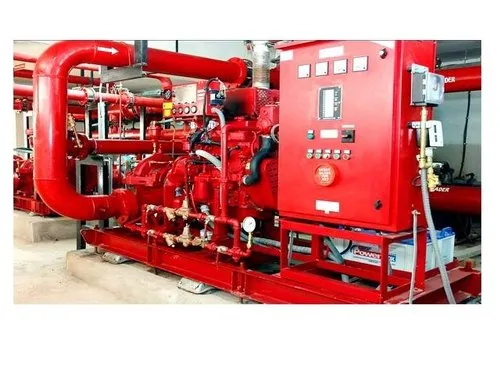Fire Pump Testing: fire pumps play a critical role in protecting lives and property. These essential systems are designed to deliver water at sufficient pressure and flow rates to extinguish fires. However, to ensure that fire pumps operate effectively when needed, regular testing and maintenance are crucial. This blog post will explore the fire pump testing requirements, the importance of compliance, and the best practices for testing and maintaining fire pumps.
Understanding Fire Pumps
Before delving into testing requirements, it’s important to understand what fire pumps are and their functions. Fire pumps are specialized pumps used to provide water supply for fire protection systems, including sprinkler systems and standpipes.
Types of Fire Pumps
- Electric Fire Pumps: These are the most common type, powered by electricity. They are suitable for facilities with a reliable power supply.
- Diesel Fire Pumps: Often used in areas where electricity is unreliable, diesel pumps are self-sufficient and can operate independently.
- Horizontal Split-Case Pumps: Known for their efficiency and reliability, these pumps are commonly used in larger buildings.
- Vertical Turbine Pumps: Ideal for underground water sources, these pumps are efficient for deep wells.
Understanding the type of fire pump you have is essential for adhering to the specific testing requirements applicable to that system.
Importance of Fire Pump Testing
Fire pump testing is not just a regulatory requirement; it is essential for safeguarding lives and property. Here are some reasons why regular testing is crucial:
- Operational Readiness: Regular testing ensures that the fire pump will operate effectively during an emergency.
- Compliance with Laws and Regulations: Most jurisdictions have strict regulations governing fire safety systems, including fire pumps. Non-compliance can lead to hefty fines and increased liability.
- Insurance Requirements: Many insurance policies require proof of regular fire pump testing and maintenance. Failure to comply could result in denied claims.
- System Longevity: Regular testing and maintenance can extend the life of the fire pump, reducing the need for costly replacements.
Regulatory Framework
In the United States, the National Fire Protection Association (NFPA) provides guidelines that many states and local jurisdictions adopt. The primary code relevant to fire pumps is NFPA 20, which outlines the standards for the installation of stationary pumps for fire protection.
Key Standards from NFPA 20
- Installation: Fire pumps must be installed in accordance with NFPA 20, which specifies the type of pump, installation requirements, and the configuration of the system.
- Testing Frequency: NFPA 20 mandates that fire pumps undergo various tests, including:
- Acceptance testing upon installation.
- Annual testing to verify performance.
- Documentation: All tests must be recorded, and maintenance logs must be maintained to demonstrate compliance with the code.
- Emergency Power Supply: If the fire pump relies on an electric supply, it must have a reliable backup power source, such as a diesel generator, to ensure operation during power outages.
Testing Requirements
Acceptance Testing
Upon installation, fire pumps must undergo acceptance testing to ensure they meet the design specifications. This testing typically includes:
- Flow Test: Measure the pump’s flow rate to ensure it meets the required gallons per minute (GPM) specified in the design.
- Pressure Test: Verify that the discharge pressure meets the system requirements.
- Power Supply Check: Ensure the pump operates correctly under its expected power supply conditions.
- System Integration Testing: Test the pump’s integration with the overall fire protection system, including alarms and monitoring systems.
Annual Testing
After acceptance testing, fire pumps must be tested annually to ensure they remain operational. This testing typically includes:
- Flow Test: Again measure the flow rate and discharge pressure.
- Visual Inspection: Check for any visible signs of wear, leaks, or damage.
- Electrical Inspection: Ensure that all electrical components are functioning properly.
- Control Panel Check: Test the control panel functions and alarms to ensure they are operational.
- Performance Evaluation: Assess the overall performance of the pump to identify any potential issues.
Monthly and Weekly Checks
- Weekly: Inspect the pump for any obvious issues, such as leaks or unusual noises.
- Monthly: Conduct a more thorough inspection, including checking the oil levels in diesel pumps and testing the power supply.
Best Practices for Fire Pump Testing
- Hire Qualified Professionals: Always engage certified fire protection specialists for testing and maintenance. Their expertise ensures compliance with regulations and safety standards.
- Maintain Detailed Records: Keep comprehensive records of all testing and maintenance activities. This documentation is crucial for compliance and can be valuable in case of inspections or audits.
- Create a Testing Schedule: Establish a regular testing schedule to ensure that all requirements are met consistently. This should include acceptance testing, annual testing, and routine inspections.
- Use Advanced Technology: Consider using monitoring systems that provide real-time data on pump performance. These systems can alert you to issues before they become critical.
- Training and Awareness: Ensure that staff members are trained in fire pump operations and maintenance. Awareness of the systems can help identify problems early.
1. What is a fire pump?
A fire pump is a device used to provide water supply at sufficient pressure and flow rates for fire protection systems, such as sprinklers and standpipes.
2. Why is fire pump testing necessary?
Fire pump testing is crucial to ensure that the pump will operate effectively in an emergency, maintain compliance with regulations, and meet insurance requirements.
3. What are the main testing requirements for fire pumps?
Fire pumps must undergo acceptance testing upon installation and annual testing thereafter, which includes flow tests, pressure tests, and system integration checks.
4. How often should fire pumps be tested?
Fire pumps should be tested upon installation, annually, and undergo regular monthly and weekly checks for proper maintenance.
5. Who can perform fire pump testing?
Only certified fire protection specialists or licensed professionals should conduct fire pump testing to ensure compliance with safety standards and regulations.
6. What documentation is required for fire pump testing?
Comprehensive records of all testing, maintenance activities, and inspections must be maintained to demonstrate compliance with regulations.
7. What happens if a fire pump fails a test?
If a fire pump fails a test, it must be repaired or replaced immediately to ensure it meets operational standards and can function during an emergency.
8. Are there specific codes governing fire pump testing?
Yes, the National Fire Protection Association (NFPA) provides guidelines, particularly NFPA 20, which outlines the standards for the installation and testing of fire pumps.
9. What regular maintenance should be performed on fire pumps?
Regular maintenance includes visual inspections, checking fluid levels, testing the electrical supply, and ensuring that control panels and alarms are operational.
10. Can I perform fire pump testing myself?
While facility staff can conduct basic inspections, professional testing should be done by qualified individuals to ensure compliance and safety.
Conclusion
Fire pump testing is a vital component of fire safety and compliance. By understanding the requirements and implementing best practices, facility managers can ensure that their fire pumps operate effectively when needed. Regular testing not only protects lives and property but also helps maintain compliance with regulations and insurance requirements.
In an ever-evolving regulatory landscape, staying informed about fire pump testing requirements is essential for any organization committed to safety. By prioritizing the maintenance and testing of fire pumps, you contribute to a safer environment for everyone.
Remember, the cost of negligence in fire safety can far exceed the investment in proper testing and maintenance. Don’t wait for a fire to realize the importance of having a reliable fire pump system in place.

